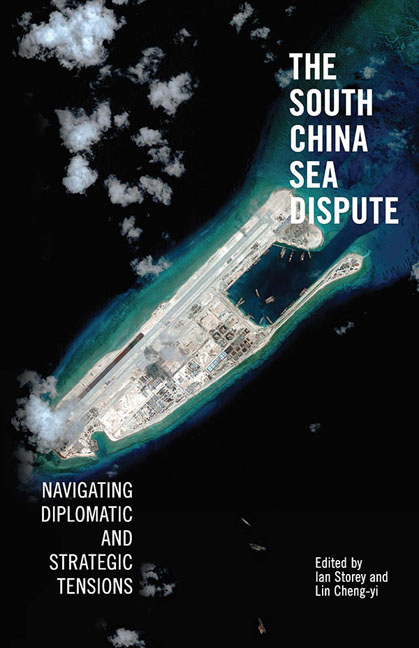Book contents
- Frontmatter
- Contents
- About the Contributors
- 1 Introduction
- 2 Untangling a Complex Web: Understanding Competing Maritime Claims in the South China Sea
- 3 China Debates the South China Sea Dispute
- 4 Taiwan's Evolving Policy towards the South China Sea Dispute, 1992–2016
- 5 The South China Sea: Primary Contradictions in China–Southeast Asia Relations
- 6 Rising Tensions in the South China Sea: Southeast Asian Responses
- 7 The Philippines and the South China Sea Dispute: Security Interests and Perspectives
- 8 A Vietnamese Perspective on the South China Sea Dispute
- 9 The South China Sea Dispute: Options for Malaysia
- 10 The United States and the South China Sea: Front Line of 228 Hegemonic Tension?
- 11 The South China Sea Dispute in U.S.–ASEAN Relations
- 12 Japan and the South China Sea Dispute: A Stakeholder's Perspective
- 13 Conclusion
- Index
3 - China Debates the South China Sea Dispute
Published online by Cambridge University Press: 19 May 2017
- Frontmatter
- Contents
- About the Contributors
- 1 Introduction
- 2 Untangling a Complex Web: Understanding Competing Maritime Claims in the South China Sea
- 3 China Debates the South China Sea Dispute
- 4 Taiwan's Evolving Policy towards the South China Sea Dispute, 1992–2016
- 5 The South China Sea: Primary Contradictions in China–Southeast Asia Relations
- 6 Rising Tensions in the South China Sea: Southeast Asian Responses
- 7 The Philippines and the South China Sea Dispute: Security Interests and Perspectives
- 8 A Vietnamese Perspective on the South China Sea Dispute
- 9 The South China Sea Dispute: Options for Malaysia
- 10 The United States and the South China Sea: Front Line of 228 Hegemonic Tension?
- 11 The South China Sea Dispute in U.S.–ASEAN Relations
- 12 Japan and the South China Sea Dispute: A Stakeholder's Perspective
- 13 Conclusion
- Index
Summary
The past few years have witnessed dramatic developments in the South China Sea dispute. In 2009, submissions to the United Nations Commission on the Limits of the Continental Shelf (CLCS) outlining extended continental shelf claims by several of the claimant countries created a round of diplomatic tussles. In particular, the People's Republic of China's (PRC) submission of its nine-dash line map of the South China Sea in a protest note to the CLCS sparked strong opposition from the other claimants. The diplomatic contentions at the ASEAN Regional Forum (ARF) in July 2010 in Hanoi — particularly between U.S. and Chinese officials — raised tensions to their highest level in over a decade. In the first half of 2011, a series of incidents, including Beijing's heavyhanded actions against Philippine and Vietnamese fishery and energy exploration activities, further strained relations with Hanoi and Manila. The Sino–Philippine standoff over Scarborough Shoal in 2012 raised tensions several notches higher, and led the Philippines to pursue closer relations with the United States and Japan, while the deployment of the Chinese oil rig Hai Yang Shi You-981 (HYSY-981) into waters near the Paracel Islands in May–July 2014 created a two-month crisis between Hanoi and Beijing.
As a result of the diplomatic and strategic repercussions of Beijing's actions in the South China Sea, Chinese policymakers and analysts have been forced to reassess the country's existing policy and future options.
This chapter examines China's South China Sea debate since 2009. It seeks to provide an analysis of three aspects of this debate: the various schools of thought that have emerged regarding what China's response should be; policy proposals regarding how China should respond to the changing dynamics; and areas of consensus and disagreement. It places the debate within the context of China's official position on the South China Sea. In doing so, we can derive a better understand of Beijing's future policy in the South China Sea.
Four main themes have emerged in China's debate. First, in contrast to widespread foreign criticism of China for its growing assertiveness, the predominant view among Chinese analysts is that rising tensions are mainly attributable to collusion between the United States and certain Southeast Asian claimants, particularly Vietnam and the Philippines.
- Type
- Chapter
- Information
- The South China Sea DisputeNavigating Diplomatic and Strategic Tensions, pp. 47 - 73Publisher: ISEAS–Yusof Ishak InstitutePrint publication year: 2016



